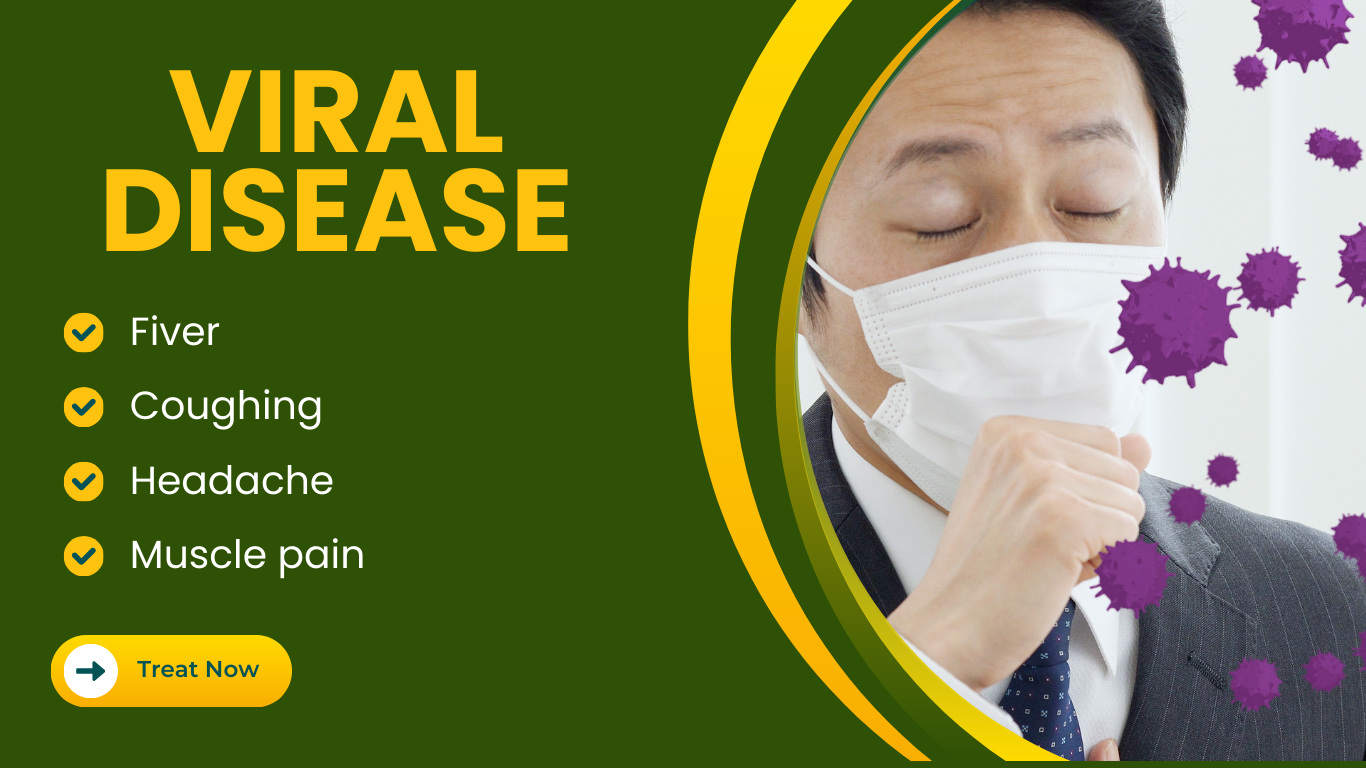1. What are viral diseases?
Viral diseases are illnesses caused by viruses — tiny infectious agents that enter human cells and multiply, often damaging tissues and causing symptoms.
2. What are some common viral diseases?
Common cold
Influenza (Flu)
COVID-19
Measles
Chickenpox
Hepatitis (A, B, C, etc.)
HIV/AIDS
Dengue and Zika virus
Polio
3. How do viruses spread?
Through air (coughing, sneezing → flu, cold, COVID-19)
Contaminated food and water (Hepatitis A, Rotavirus)
Insect bites (Dengue, Zika, Yellow fever)
Blood and sexual contact (HIV, Hepatitis B, C)
Direct contact with infected person (Measles, Chickenpox)
4. What are common symptoms of viral infections?
Fever
Fatigue and body aches
Cough, sore throat, runny nose
Rash (measles, chickenpox)
Diarrhea and vomiting (gastroenteritis viruses)
Headache and muscle pain
In severe cases: breathing problems, jaundice, paralysis, bleeding
Lorem ipsum dolor sit amet, consectetur adipiscing elit. Ut elit tellus, luctus nec ullamcorper mattis, pulvinar dapibus leo.
5. How are viral diseases treated?
Supportive care: Rest, fluids, fever reducers (paracetamol)
Antiviral drugs: For specific viruses (HIV, Hepatitis B/C, Influenza, COVID-19)
No antibiotics: since they don’t work against viruses (only against bacteria)
Hospital care in severe cases (oxygen, IV fluids, intensive care)

